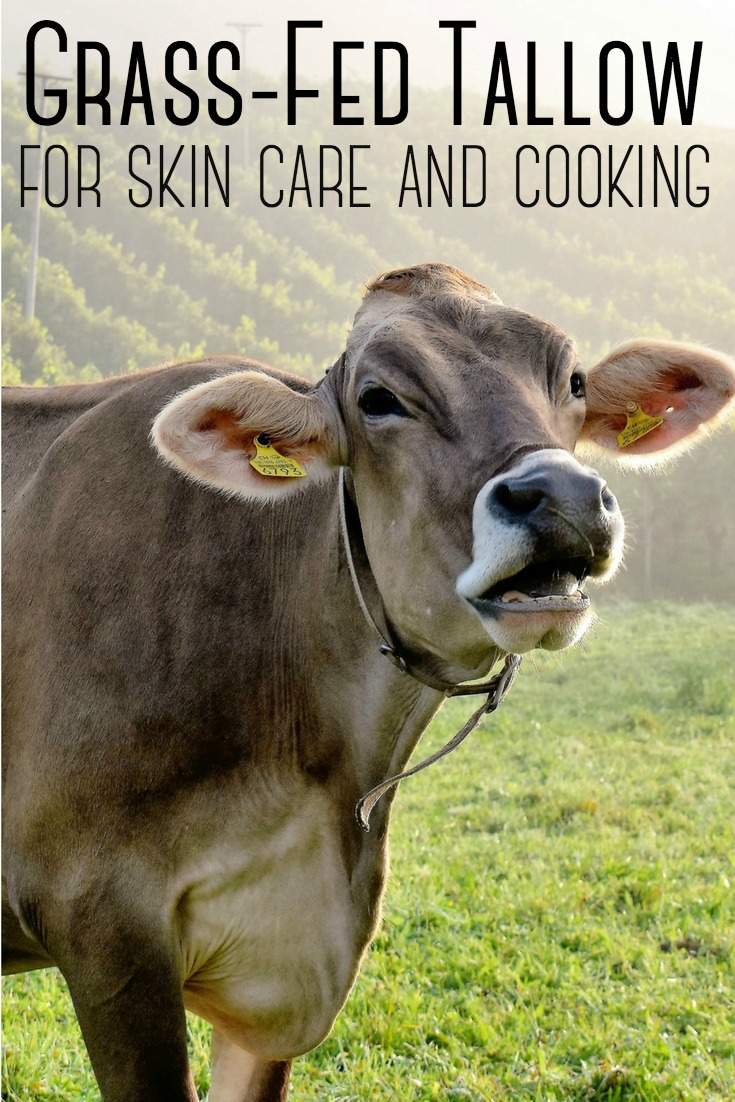
Tallow is a word you don’t particularly hear about all too often – at least when I mention it to people, their head tilts and they say “what is tallow, exactly?”
Over the last 10-20 years, tallow has been crucified by the food and health industry as an unhealthy fat ~ something that should not be messed with simply because it is perceived to lead to health issues, or is looked down upon since it is an animal fat.
The truth is that tallow from grass fed cattle is actually wonderful to cook with and also even better to rub on your skin.
What is Tallow?
Tallow is rendered fat (suet) that surrounds the kidneys/organs of a cow, deer or bear. Once a cow is butchered, the tallow separates from the tissues (muscles/ligaments, etc) and turns into a colored oil. It’s then sifted/strained through a fine filter to remove impurities, and cooled.
That process can be repeated once, twice or even three times to achieve the most beautiful result, that is used for cooking and skincare (along with many other uses). Grass-fed tallow is rich in:
- vitamins (A, D, E and K)
- conjugated linoleic acid (linked to cancer prevention and improved brain function)
- antioxidants
- anti-microbial palmitoleic acid
Tallow was highly popular long before supermarkets became a source of regular weekly shopping trips, as families used what they had available in their homes for making personal care items like bar soap, candles and skin creams/salves. Tallow was used for cooking and was a kitchen favorite because it had such a high smoke point (400 degrees F) and lasted for quite a long time once rendered.
Grain-Fed vs Grass-Fed: Is All Tallow the Same?
Though it’s incredibly easy to source, and even more versatile to use, not all tallow should be considered the same. Tallow rendered from grass-fed beef is a better option for those looking to take advantage of its benefits. Compared to grain-fed, factory farmed cows, tallow rendered from grass-fed beef is always a better option.
Conventionally-farmed cows are fed an unnatural diet of GMO corn and kept in confined areas with no access to pasture or regular, daily sun. Many toxins are stored in grain-fed animal fat, which, in turn, can end up in your food or skin care products – yuck and gross!
If you are purchasing tallow for cooking or skin care, it’s best to look for sustainable sources – a local farm that raises grass-fed, pastured beef cattle (grass-fed and grass-finished) is better than using any tallow, especially tallow from a source that is questionable.
Grass-fed beef is a significantly better option – cows that graze on pasture reap higher levels of vitamin A, D, E and K because of the sunshine that they are exposed to through the day.
Tallow for Cooking and Skin Care
Just like the human body stores valuable nutrients in our fat to use later on much like cows store a wealth of benefits in the fat (suet). For this reason, it’s a better option to choose tallow from grass-fed, pastured cows that are given ample space to move around and simply be a cow, graze on pasture and just enjoy life.
Grass-Fed Tallow for Cooking:
- rich in antioxidants
- high in vitamin A, D, E and K
- high in Omega 3 Fatty Acids
- high in Conjugated Linoleic Acid (CLA)
Grass-Fed Tallow for Skin Care:
- rich in vitamin A, D, E and K
- rich in antioxidants (which are great for aging)
- closely resembles the human skin cell structure
- easily absorbed
Just a little bit of tallow goes a long way, and it’s wonderful for both adults and children (even babies!)
Tallow closely resembles the human skin cell structure because both human skin and tallow contain 50-55% saturated fats, which help provide skin cell integrity. Tallow and Sebum (which is the oil we have naturally in our skin) both contain primarily triglycerides, which allow nutrients to be absorbed quite easily.
I love using tallow to make tallow balm for the skin, as well as cold process soap – used in soap making it makes a wonderfully hard, but very nourishing bar that lathers beautifully.
References
Weston Price – Traditional Nourishing and Healing Skin Care
Weston Price – Fatty Acid Analysis of Grass-fed and Grain-fed Beef Tallow


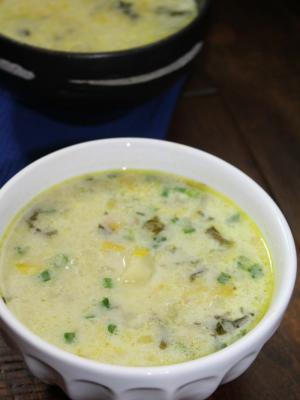
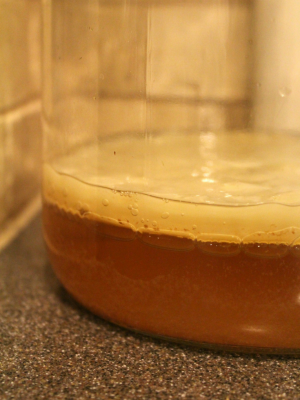
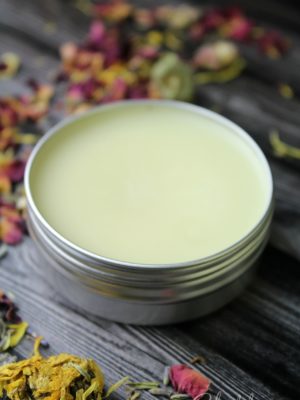
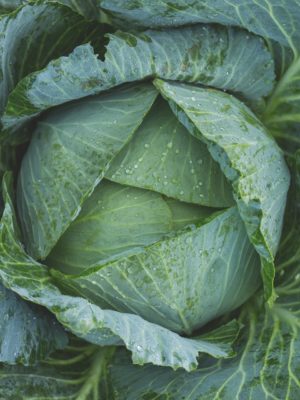

I’m suffering from an anal fissure. Was wondering if tallow would speed up the healing process. Have you heard of it healing cuts?
I’m not a doctor, but I would definitely give tallow a try. I struggle with cracked, dry skin on my hands and heels and it does wonders for that. It is the only thing that keeps my skin moisturized.
I’ve rendered my own tallow from a brisket I bought from costco. Probably grain fed! It comes out soft at room temp after its cooled. Is grass fed beef tallow harder than grain fed beef tallow? Im making pemmican and need solid tallow for a firm product which I cant achieve with a soft almost fluid tallow! Thanks in advance!
Dean
Hi Dean — my last tallow render was very soft too. Last year, when I rendered my grass fed steer, it was hard as ever, and very rich in color. I like to have mine on the harder side as well, when it is too soft, it’s more difficult to use as I’d like (which is in soap!)
The suet is actually the hard, fatty part of the cow surrounding the kidneys. You take that suet, and render it down into Tallow .. then use that Tallow to make pemmican. That’s what the Native Americans used to do (use tallow). I store my tallow in the fridge and freezer, which hardens it up. But I don’t know if it’ll harden it up enough to what you need it to be to make pemmican.
Beef Suet is the hard fatty part of the cow that surrounds the kidneys.
Beef Tallow is the rendered down fat from Suet.
To make Beef Tallow, simply place Suet over low heat to render out the liquid fat.
Can you use rendered grassfed beef tallow (like from Whole Foods) right out of the jar for skin or do you have to further process it to use it on your skin?
You can use it straight from the jar. When I use it for body butter, or salve though, I go a step further and whip it along with another oil – and sometimes, a little bit of beeswax. For example, I just made whipped tallow body butter a few days ago and I added some beeswax (melted of course) with cold pressed infused grapeseed oil (I infused the grapeseed with creosote, but any herb really will work). Then I added that to the tallow and whipped it light and fluffy.